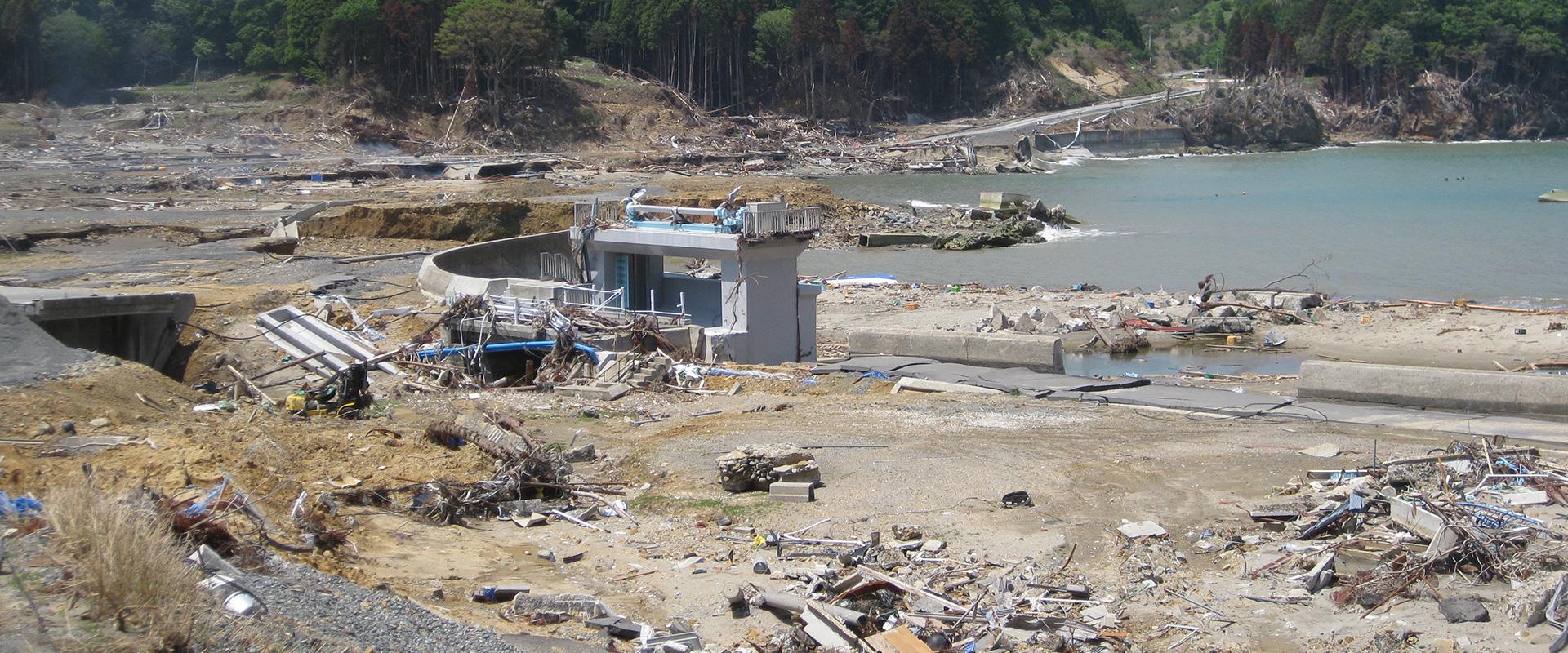A study conducted by BRGM in conjunction with French and Japanese researchers has just been published in the American journal PNAS. It provides an estimate of the amount of radioactive elements still present in the environment surrounding the former Fukushima power plant, following the nuclear accident in March 2011, after one of the largest decontamination programmes in history.
According to the study, decontamination efforts after the disaster were very effective in eliminating Caesium-137, but a large proportion of this radioactive contaminant persists in forests that have not been treated.
Authors of the study
The study, published in the journal PNAS, was conducted by Rosalie Vandromme, a soil erosion specialist at BRGM, with the LSCE (Laboratoire des Sciences du Climat et de l'Environnement, a joint CEA, CNRS, University of Versailles Saint-Quentin laboratory), and Japanese researchers from NIES (National Institute for Environmental Studies) and IER (Institute of Environmental Radioactivity).
A decontamination strategy in Japan that contrasts with the approach adopted at Chernobyl
In March 2011, a powerful earthquake hit the east coast of Japan, leading to a major accident at the Fukushima-Daiichi nuclear power plant. Radionuclides released into the atmosphere caused radioactive contamination of the soil. Caesium-137 is one of the most problematic radionuclides, because it was emitted in large quantities and has a relatively long half-life of 30 years.
Since then, the Japanese authorities have carried out considerable decontamination work targeting urban and agricultural areas, with the aim of facilitating the return of residents to the previously evacuated zones. This approach contrasts with the strategy adopted at Chernobyl in 1986, where the most contaminated areas are still off-limits. However, the effectiveness of the Japanese decontamination strategy in dispersing radioactive contaminant fluxes in mountainous landscapes exposed to hurricanes had not been quantified.
Determining changes in radionuclide contamination of soils
To find out more precisely where the Caesium-137 may have moved over the last twelve years and in what quantities, the authors of the study combined monitoring and modelling of a river in a catchment area representative of the worst affected area in Japan to study soil erosion, sediment transfers and Caesium-137.
The results showed that Caesium-137 concentrations in sediments transported in the river systems draining the main plume of radioactive pollution, fell by around 90% between 2011 and 2020.
However, because of the difficulty of removing contaminated soil from steep, wooded slopes, only 16% of the catchment area has been treated. Around 67% of the initial radiocaesium remains in forest landscapes, and the flow of Caesium-137 into rivers has dropped by only 17% compared with estimates which did not include decontamination.
Decontamination effectiveness limited by topography
Decontamination operations were therefore very effective on the treated surfaces, but only in a small part of the area, due to the predominance of steep wooded slopes. As a result, 67% of the initial radiocaesium contamination remains stored in the predominantly forest landscape, which could contribute to the future dispersion of Caesium-137 downstream as a result of erosion.
This study raises questions about the cost/benefit ratio of partial decontamination, given that by 2019 only 30% of the inhabitants had returned to live in the region. In addition, this modelling tool could be used to simulate management scenarios in the event of future nuclear or industrial accidents.





